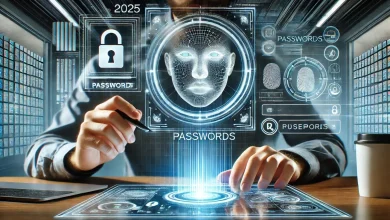Saeed Patel, Group Director at Eastnets, the compliance, payment and fraud protection experts, explains which cutting-edge technologies are vital in the fight against financial crime.
Financial crime is exploding, costing $5.38 trillion globally. That’s more than twice the UK’s entire GDP. Money laundering is an equally big challenge, with the United Nations Office on Drugs and Crime (UNODC) saying that between 2 and 5 per cent of global GDP is laundered each year. That’s between $811 billion and $2.12 trillion.
In fact, there have been few points in history when fraud hasn’t been a growth business. But it’s particularly bad at the moment. Economic worries caused by COVID-19, along with the growth in electronic payments, have provided a rich breeding ground for criminality.
A trend that stands out among the latest wave of fraud is the use of technology. Or, more accurately, the law-breaker’s ability to use it to their advantage. The question, therefore, is how can we stop or at least reduce fraud rates?
The answer lies in the old adage of fighting fire with fire. In other words, we need to beat the fraudsters at their own game and harness the power of some of the world’s most powerful technologies in the battle to secure our wealth and protect our economies, societies and environment from harmful activity. In doing so, there are three tools that can make an enormous difference.
Artificial Intelligence
The first is AI. The greatest benefit it can bring is scale and speed. Going far beyond conventional human or software-based fraud detection, highly sophisticated AI models can detect unusual behaviour at a previously unimaginable scale in real-time. It doesn’t just stop fraud in its tracks, it can predict fraudulent transactions and suspicious customer behaviour before it happens. This is vital when real-time payments are growing at such a pace.
It achieves this by creating risk scores, identifying irregular behaviours and undertaking predictive analytics to improve detection rates. What’s more, it’s so accurate that it can reduce false positives. This is hugely beneficial, because cutting out the ‘noise’ of potential, but not proven fraud, frees valuable compliance time for staff to focus on the genuine issues.
When payment speed is increasing and financial crime is so sophisticated, AI and machine learning are the only way financial institutions can make sense of the huge volumes of data they need to process and analyse. However, there is one key factor in its success: transparency.
Some forms of AI take an instruction and work out their own methodology to achieve a goal. To put this in context, they’re tasked with spotting fraud, creating risk scores for transactions and then presenting that to analysts to make a judgement. But the way in which they create the risk score is hidden and often far from the way a human might approach the same task. This is known at “black box” AI. A goal is set, and the AI finds the best way to solve it but cannot show its workings.
In fraud prevention this isn’t acceptable. This is people’s money we’re dealing with, and regulators need to know how financial institutions are coming to their conclusions. Therefore, AI needs to show how it generated the results – and therefore “explainable AI” is a necessary requirement for transparency and auditability. Regulators need to see this to mark the effectiveness of fraud prevention. That’s not to say they’re wary of AI – in fact, they’re pushing for its adoption.
Link Analysis
The second technology that can stem the flow of fraud is Link Analysis. It’s less well known than AI but is something many of us will recognise if explained in plain language. Imagine watching your favourite crime drama. Inevitably, at some point, a detective will be shown in front of a pinboard with images on it. Red string criss-crosses the board from pin to pin, linking evidence, people and activities. This is Link Analysis in its simplest form.
Now consider software undertaking this same process, finding matches in data for known patterns of interest, anomalies where known patterns are violated, or discovering new patterns of interest. This can be presented in a graphical network visualisation, showing previously hidden connections across millions of disparate nodes of data. It provides context to suspicious transactions and offers recommendations for action.
Why is it important? Because the human brain craves visual data. We can clearly see how everything fits together if we’re shown. We can instantly see how things connect on an image. We couldn’t do the same manually evaluating a huge data set, despite it saying exactly the same thing, but in a different format. The technique is another way of linking the power of AI and machine learning with human ingenuity, allowing both to work together in the fight against fraud.
Blockchain
The third crucial piece of technology is blockchain. Hailed by technologists as the solution to everything, it’s easy to think this is an example of using software for the sake of it. But this couldn’t be further from the truth. Blockchain in this context is a meaningful innovation with tangible uses and impact.
Why? Because anti-money laundering techniques rely on keeping on top of sanction and watch lists from regulatory bodies. Doing so manually, or with limited automation, is prone to delays and human error. It’s also time consuming.
Blockchain can solve this by using distributed-ledger technology to eliminate these risks. The information is distributed and drawn upon to complete watchlist updates automatically and in real-time.
As soon as a country, individual, or entity is added or deleted from a watchlist, updates can securely flow from the ledger to financial institutions. Because the system is secure, decentralised and lightning-fast, it ensures screening software is always using the latest information, offering the highest level of protection.
And having this level or security is vital, because one thing is certain: criminals are using cutting-edge technology and the industry has a duty to take note and harness their power to fight back, cut fraud, reduce money laundering and turn the tide of financial crime.
We’ll never stop fraud and money laundering, but we can mitigate against it if we take the right approach. Now’s the time to act and these are the technologies we need.


